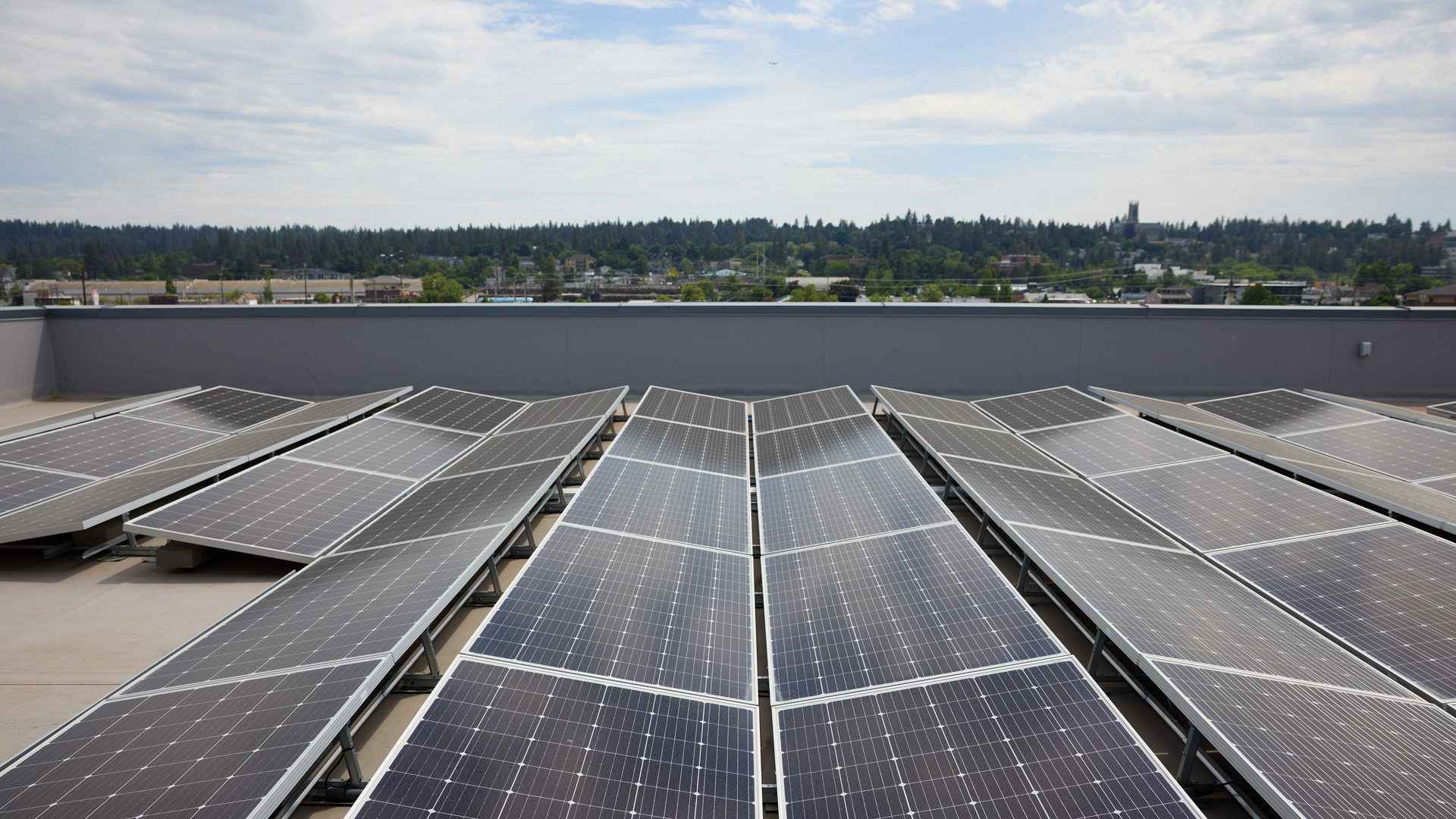- All Posts
- Solar – An Affordable Method To Achieving Building Performance Standards
Solar – An Affordable Method To Achieving Building Performance Standards
To reduce building-related greenhouse gas emissions (GHG), local and state governments are implementing building performance standards (BPS) programs. The City of Denver’s BPS program, Energize Denver, applies to buildings over 25,000 sq. ft. while the State of Colorado’s BPS program uses a 50,000 sq. ft. threshold. The programs assist building owners with establishing a baseline energy utilization index (EUI) while setting periodical benchmarking goals for compliance. If compliance standards are achieved, gradually the EUI of each building will be reduced while noncompliance may prove costly.
Unlike owner-occupied buildings, tenant-occupied buildings with triple-net leases force their owners into a dilemma when it comes to meeting BPS. While still responsible for meeting EUI targets, they have limited control over how and when energy is used by tenants including light switches, thermostats, computers and other office and industrial equipment. As building owners struggle to develop a mutually beneficial compliance solution that minimizes capital investment and avoids fines while meeting tenant needs, traditional energy efficiency projects may not be enough.
Fortunately, rooftop solar PV offers such a solution. Both Energize Denver and the State of Colorado BPS programs allow electricity generated onsite, through solar PV systems, to be credited to the building’s energy use before EUI targets are evaluated. In short, rooftop solar PV makes it much easier to meet or exceed the targets. In many cases, the use of rooftop solar PV alone will reduce the EUI of the building enough to achieve compliance and avoid fines.
Further, owners of tenant-occupied buildings can install a rooftop solar PV system and sell the electricity produced to the tenant(s). While each lease and owner-tenant contract are unique, onsite solar PV-generated electricity prices are typically the same as or lower than those of utility-provided electricity. This approach ensures tenants are provided affordable electricity while also removing financial burdens for building owners struggling to achieve BPS utilizing capital-intensive energy efficiency or electrification projects.
For owners of multi-tenant buildings, recent Xcel Energy policy changes have made solar PV solutions even more cost-effective. Moving forward, a single rooftop solar PV system may allocate its monthly electricity production to multiple tenants (meters) in the building. Perhaps one tenant has a larger space or a more energy-intensive process than the others; that tenant could be allocated a larger portion of the total solar PV production each month. Xcel Energy meters how much solar PV electricity is produced and credits a fixed portion (or share) of the total to each of the tenant meters based on a “property owner defined system share,” effectively lowering the bill for each tenant. The building owner, in turn, bills each tenant for the amount that was credited in order to fund the system installation, operation and maintenance.

McKinstry, a local energy efficiency and renewable energy solutions provider, recommends a four-phase approach to help tenant-occupied building owners meet their compliance goals while maximizing return on investment:

Phase One – ASSESS: Because each facility is unique, the best place to start is with historical data. Our certified engineers will conduct an interview to review recent utility bills, the building’s ENERGY STAR profile and gain an understanding of the building use. Note that having the correct building use category will greatly impact EUI targets and what is needed to comply. If your building has been meeting the current BPS requirements, this phase is mostly complete.
Phase Two – INVESTIGATE & ANALYZE: Moving forward, the process includes a walkthrough of each facility with a lead engineer to identify the major pieces of energy utilization equipment, and how it is operated. This is followed by an initial assessment of energy conservation measures (ECMs), including those that have little to no cost. We will also perform an assessment of equipment electrification options, such as heat pumps in the place of standard air conditioning and gas-fired HVAC equipment. For each ECM and electrification opportunity, we will identify available financial incentives and rebates that reduce the investment required, as well as sources of project funding. Phase two processes are packaged into a strategic performance compliance roadmap.
Phase Three – IMPLEMENT & VERIFY: An agreed-upon roadmap is implemented, with ECMs and electrification equipment installed and programmed for efficient operation. Roadmaps may include non-capital-intensive solutions such as retro-commissioning (RCx) and facility condition assessments (FCA). This phase often produces a significant return on investment that owners and operators can take to stakeholders.
Phase Four – MONITOR: Building professionals know that once buildings are “tuned-up,” they start to drift outside of optimal performance. McKinstry recommends ongoing monitoring, also called Active Energy Management, to ensure that buildings continue to perform and that EUI targets are being met in the months and years ahead.
McKinstry is proud to collaboratively partner with building owners on a holistic compliance strategy that keeps your budget and mission top of mind while also ensuring long-term compliance and energy efficiency. Please contact us if we can help you better understand BPS and your options for compliance, especially with tenant-occupied properties.
Explore Other Insights

Delivering 100+ Energy Audits Across Washington
When Washington State introduced its Clean Building Performance Standards, public-sector building owners faced a sign…

Constant Curiosity and Connection: Cass Young’s Journey a…
From supply chain to project engineering, Cass Young has built her career at McKinstry by staying curious, embracing …

AI’s Shadow Footprint: What Smart Infrastructure Needs to…
Every advancement in artificial intelligence carries a physical consequence: more computation, more heat and more pow…